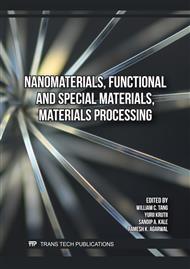p.13
p.25
p.39
p.45
p.53
p.59
p.65
p.71
p.79
Self‑Propelled Nanomotor Probe Enabled Lateral Flow Immunoassay for Sensitive Detection of Inflammatory Factors
Abstract:
Lateral flow immunoassay (LFIA) is a widely used immunoassay technology known for its simplicity, rapid detection, and low cost. However, conventional LFIA primarily relies on the passive diffusion of nanoparticle probes and immunocomplexes, resulting in low immunoreaction efficiency and less sensitive immune response. In this study, we developed an active propulsion-driven Au@mSiO₂@Pt Janus nanomotor to enhance the detection performance of LFIA. The Pt nanolayer in the nanomotor serves as a catalyst for H₂O₂ decomposition, generating a self-propulsion force that facilitates antigen-antibody interactions. These nanomotors were then employed as probes in LFIA to improve detection sensitivity. Additionally, we developed a portable image-processing biosensor to validate the effectiveness of this strategy. To demonstrate the analytical performance of nanomotor-LFIA, we selected C-reactive protein (CRP) and serum amyloid A (SAA) as target biomarkers. The results confirmed the multiplex quantitative detection capability of our system, achieving detection limits (LOD) of 0.9 ng/mL for CRP and 1 ng/mL for SAA. This work provides a novel strategy for improving immunoassay sensitivity. We believe that nanomotor-driven LFIA holds great potential for future high-sensitivity point-of-care testing (POCT) applications.
Info:
Periodical:
Pages:
53-58
Citation:
Online since:
November 2025
Authors:
Price:
Сopyright:
© 2025 Trans Tech Publications Ltd. All Rights Reserved
Share:
Citation:


